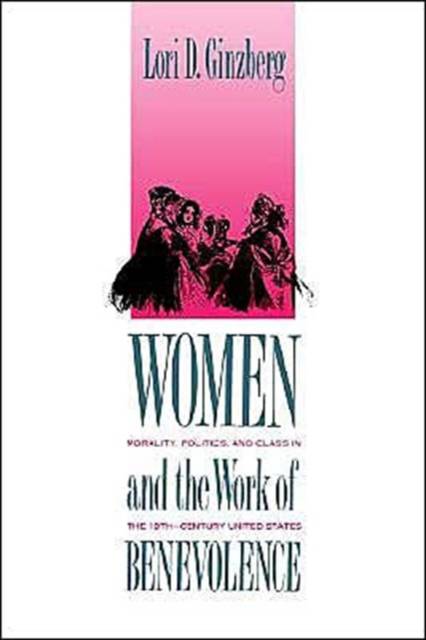
- Afhalen na 1 uur in een winkel met voorraad
- Gratis thuislevering in België vanaf € 30
- Ruim aanbod met 7 miljoen producten
- Afhalen na 1 uur in een winkel met voorraad
- Gratis thuislevering in België vanaf € 30
- Ruim aanbod met 7 miljoen producten
Zoeken
Women and the Work of Benevolence
Morality, Politics, and Class in the Nineteenth-Century United States
Lori D Ginzberg
€ 42,45
+ 84 punten
Omschrijving
Nineteenth-century middle-class Protestant women were fervent in their efforts to "do good." Rhetoric--especially in the antebellum years--proclaimed that virtue was more pronounced in women than in men and praised women for their benevolent influence, moral excellence, and religious faith. In this book, Lori D. Ginzberg examines a broad spectrum of benevolent work performed by middle- and upper-middle-class women from the 1820s to 185 and offers a new interpretation of the shifting political contexts and meanings of this long tradition of women's reform activism. During the antebellum period, says Ginzberg, the idea of female moral superiority and the benevolent work it supported contained both radical and conservative possibilities, encouraging an analysis of femininity that could undermine male dominance as well as guard against impropriety. At the same time, benevolent work and rhetoric were vehicles for the emergence of a new middle-class identity, one which asserts virtue--not wealth--determined status. Ginzberg shows how a new generation that came of age during the 1850s and the Civil War developed new analyses of benevolence and reform. By post-bellum decades, the heirs of antebellum benevolence referred less to a mission of moral regeneration and far more to a responsibility to control the poor and "vagrant," signaling the refashioning of the ideology of benevolence from one of gender to one of class. According to Ginzberg, these changing interpretations of benevolent work throughout the century not only signal an important transformation in women's activists' culture and politics but also illuminate the historical development of American class identity and of women's role in constructing social and political authority.
Specificaties
Betrokkenen
- Auteur(s):
- Uitgeverij:
Inhoud
- Aantal bladzijden:
- 256
- Taal:
- Engels
- Reeks:
Eigenschappen
- Productcode (EAN):
- 9780300052541
- Verschijningsdatum:
- 29/07/1992
- Uitvoering:
- Paperback
- Formaat:
- Trade paperback (VS)
- Afmetingen:
- 156 mm x 235 mm
- Gewicht:
- 362 g

Alleen bij Standaard Boekhandel
+ 84 punten op je klantenkaart van Standaard Boekhandel
Beoordelingen
We publiceren alleen reviews die voldoen aan de voorwaarden voor reviews. Bekijk onze voorwaarden voor reviews.











